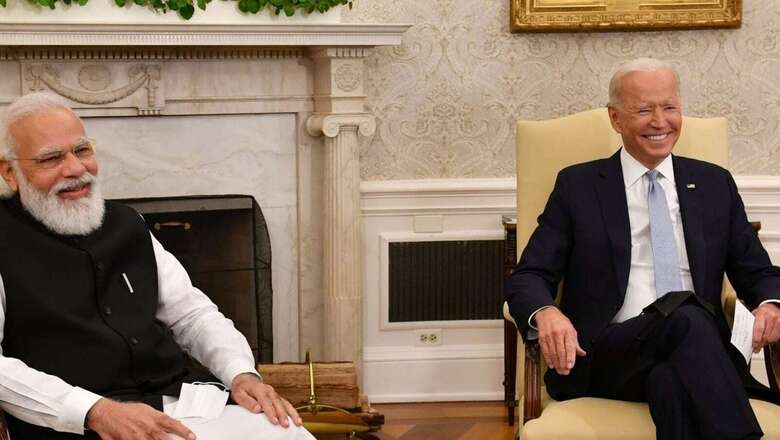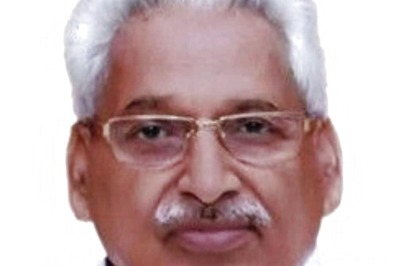
views
Prime Minister Narendra Modi’s US visit was important as it was the first face-to-face delegation-level talks between the two countries. Telephone conversations cannot replace across the table engagement which is backed by elaborate home work by the bureaucracies on the gamut of ties, the preparation of talking points, the priority issues to be raised by each side, the nuances and the body language to be read, and so on. It also provides an occasion to build a personal rapport, something which Prime Minister Modi cherishes.
His meetings with American CEOs were well focused, covering areas in which India is seeking investment and technology from the US, be it the semiconductor and wireless technology manufacturer Qualcomm (most important for building capacity at home in this vital area), software company Adobe, renewable energy company First Solar (renewable energy), arms manufacturer General Atomics (drones), and investment management company Blackstone ($15 billion investment in India already).
Prime Minister Modi’s meeting with Vice-President Kamala Harris was politically important in the background of her ethnic origin, but more so because of her support in the past for Kashmiris, sharp criticism of our revision of Article 370 and the Citizenship Amendment Act and her backing of intervention by the US if needed. Political doubts about her linger in India. The Modi-Harris meeting was good both for political optics at home in India and the Indian-Americans and helps to address the reservations about her. That in her meeting with Modi she mentioned that Pakistan needed to act against terrorist groups operating from its soil to ensure that they did not threaten the security of the US and India seems to have been revealed to the media by the Indian side, while normally this information should have been conveyed to the media by the US side.
The US administration, including Biden himself, has been studiously silent publicly on Pakistan’s complicity with the Taliban and terror emanating from its soil, and to that extent Harris struck a different note at a time when Pakistan is heady with its success in Afghanistan. Interestingly, in her own tweet Harris does not mention Pakistan as part of her conversation with Modi. Harris and Modi shared concerns and priorities such as climate change, COVID-19 and the need to ensure a free and open Indo-Pacific. She has accepted Modi’s invitation to visit India. The uncomfortable Harris chapter seems to have been adequately closed during Modi’s visit.
ALSO READ | With Boost to Manufacturing and FDI, India is the Winner at Quad
From Vaccines to Renewables
The India-US joint statement on Prime Minister Modi’s visit sums up succinctly the principal pillars of the India-US relationship: building a strategic partnership and working together with regional groupings, including ASEAN and Quad members, to promote shared interests in the Indo-Pacific region and beyond; developing a trade and investment partnership ; finishing the fight against the COVID-19 pandemic and other health challenges; galvanising global efforts to scale up climate action; and enhancing people-to-people ties.
India and the US combating the COVID-19 pandemic together is a productive agenda, as the US largely controls the supply chains of vaccine production and India has the largest capacity in the world to produce vaccines at affordable cost. The joint statement speaks of the two countries’ commitment to lead the global effort to end the COVID-19 pandemic. Biden welcomed India’s announcement that it will resume exports of COVID-19 vaccines, including to COVAX.
Biden has expressed support for Prime Minister Modi’s intention to achieve a domestic goal of installing 450 GW of renewable power by 2030 and acknowledged the importance of mobilising finance for investments in renewables, storage, and grid infrastructure. Through the two main tracks of the Strategic Clean Energy Partnership (SCEP) and the Climate Action and Finance Mobilization Dialogue (CAFMD) under the US-India Climate and Clean Energy Agenda 2030 Partnership, the US and India will accelerate clean energy development and deployment of critical technologies to advance a clean energy transition. Interestingly, the forthcoming COP 26 in the UK and the US and India working together there to make it a success—good sounding standard formulations—are not mentioned in the document, presumably because of differences over agreed language.
In the defence area, Biden has reaffirmed America’s commitment to India as a Major Defence Partner and strengthened cooperation in advanced military technologies. The recent project to co-develop air-launched unmanned aerial vehicles (UAVs) under the Defence Technology and Trade Initiative which has so far produced nothing worthwhile takes this cooperation to an encouraging level.
On Afghanistan and Pakistan
On terrorism, the joint statement says all the right things that have been said before but without breaking any new ground. There is agreement to take concerted action against all terrorist groups, including groups proscribed by the UNSCR 1267 Sanctions Committee. The condemnation of “cross-border terrorism”—code word for Pakistan-sponsored terrorism against India—is repeated again. The denouncing of any use of terrorist proxies and emphasising the importance of denying any logistical, financial or military support to terrorist groups which could be used to launch or plan terror attacks is important in the context of the FATF decision on Pakistan.
On Afghanistan, the demand that Afghan territory must never again be used to threaten or attack any country or to shelter or train terrorists, or to plan or finance terrorist attacks expresses legitimate concerns but having handed over Afghanistan to a terrorist militia, and that too with the help of Pakistan that has backed this terrorist outfit, this demand lacks teeth. Asking the Taliban to respect the human rights of all Afghans, including women, children, and members of minority groups, when under the eyes of the international community this is happening on the ground shows the limits of such appeals. Biden is determined to defend his unseemly retreat from Afghanistan and his administration is not willing to put Pakistan in the dock.
ALSO READ | Finally, India Tells Pakistan at UN to Vacate Occupied Areas of Jammu and Kashmir
The joint statement welcomes increased cooperation under the Quad, including in the multilateral domain, given their shared vision of a free, open and inclusive Indo-Pacific region with respect to territorial integrity and sovereignty, and international law. Because of a separate Quad summit there was no need to have an elaborate paragraph on the Quad. The State Department had recently qualified the US support for India’s permanent membership of the UN Security Council. Importantly, Biden has reiterated the US support for India’s permanent membership on a reformed UN Security Council, as well as entry to the Nuclear Suppliers Group, which now seems even more difficult because of US-China and India-China differences.
Trade and Supply Chains
On pending trade issues which need resolution to accelerate the growth of India-US economic ties, it has been agreed to reconvene the India-US Trade Policy Forum before the end of 2021 to develop an ambitious, shared vision for the future of the trade relationship. The US-India CEO Forum and the Commercial Dialogue will be reconvened in early 2022.
The importance of resilient and secure supply chains between the two countries and the involvement of the private sector in both countries in building stronger linkages in critical sectors such as pharmaceuticals, biotechnology, semiconductors, and information technology figured in the discussions. Reviving the High Technology Cooperation Group (HTCG) in early 2022 with the objective of accelerating high technology commerce in key areas is a good step. So is the decision to expand partnership in new domains and many areas of critical and emerging technology—space, cyber, health security, semiconductors, AI, 5G, 6G and future generation telecommunications technology, and blockchain.
The finalisation of a Space Situational Awareness Memorandum of Understanding that will help in sharing of data and services towards ensuring the long-term sustainability of outer space activities by the end of the year is now on the agenda. The 2+2 Ministerial Dialogue of the Foreign and Defence Ministers of India and the United States will be held later this year.
The two leaders “reaffirmed, and encouraged others to embrace, their shared values of freedom, democracy, universal human rights, tolerance and pluralism, and equal opportunities for all citizens”, bringing in the democracy and human rights agenda on the table in an entirely non-controversial manner.
All in all, a good visit that takes the India-US relationship forward even if gaps and uncertainties in ties on some issues remain and will have to be dealt with pragmatically without affecting the forward dynamism of the relationship.
The author is Former Foreign Secretary. He was India’s Ambassador to Turkey, Egypt, France and Russia. The views expressed in this article are those of the author and do not represent the stand of this publication.
Read all the Latest News , Breaking News and Ukraine-Russia War Live Updates here.

















Comments
0 comment